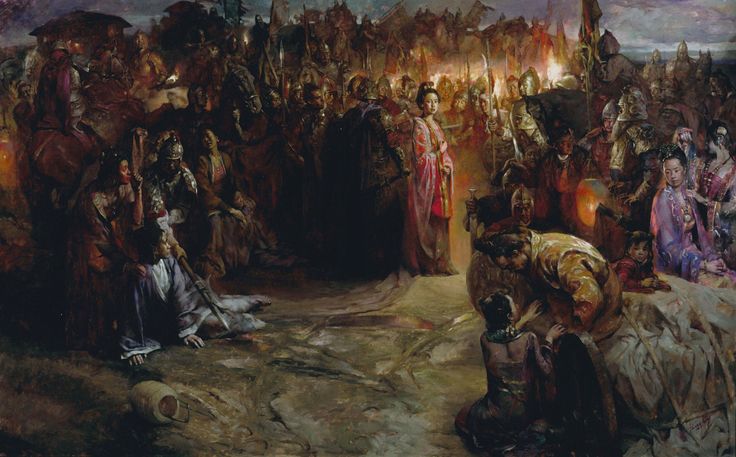An Lushan marches south, occupying Luoyang with blinding speed and leaving the Tang Dynasty reeling. Still, ultimately the tide seems ready to turn against the rebel general and self-styled-Emperor of Yan, until Chancellor Yang Guozhong’s bungling ruins absolutely everything.
Time Period Covered:
Jan-July, 756
Major Historical Actors:
Tang Dynasty:
Emperor Xuanzong of Tang
Chancellor Yang Guozhong (d. 756)
Consort Yang Guifei (d. 756)
Crowned Prince Li Heng
General Feng Chengqian (d. 756)
General Gao Xianzhi (d. 756)
General Geshu Han
Dong’an Protectorate/Yan Dynasty:
An Lushan
An Qingzong (d. 756)
Sources Cited:
Abramson, Marc S. (2008). Ethnic Identity in Tang China.
Chamney, Lee (2012). “The An Shi Rebellion and Rejection of the Other in Tang China, 618-763.” University of Alberta.
Pulleyblank, Edwin G. (1976). “The An Lu-Shan Rebellion and the Origins of Chronic Militarism in Late T’ang China” in Essays on Tʻang Society: The Interplay of Social, Political and Economic Forces.
Twitchett, Denis. “End of the Reign” in The Cambridge History of China, vol. 3.
De la Vaissière, Étienne, (tr.) James Ward (2002). Sogdian Traders: A History.
Please consider helping THoC pay for itself! You will be granted the wisdom of the Three Sovereigns.
Do you feel like the show might be worth $1 an episode? If so, please consider becoming a recurring History of China Patron at our Patreon page.
Of course, our old standby Palpal link is still a perfectly acceptable option!
Thanks so very much!


Any reason why you cite An Lushan as “Lushan” when not using his titles? I have always assumed that “An” is his surname, so using the given name is not customary in Chinese traditions.
Actually, several translations I’ve been reading of Jiu Tang Shu and Zizhi Tongjian, curiously enough, *do* seem to repeatedly referencemany of the principle figures by their given names. for instance (from this next episode):
““The khaghan himself acted as general […] had a meeting with Ziyi in the Huyen Valley. Relying on his strength, he had drawn up his soldiers, and had made Ziyi pay respect to his wolf pennons, before he would see them.”
The aforementioned Ziyi being General Guo Ziyi… in the recording I actually added the rank and surname back into the line for clarity, since he’s not a principal actor in the overall narrative. It’s frequently the same when referencing “Lushan.” In his case, however, since he’s *the* principle actor in these event and the audience (I hope) is familiar enough with him at this point, I left in a few instances of referring to him solely by his given name, rather than full name. In addition to this being consistent with the sources I’ve been reading… it’s also out of a sense gnawing insanity that comes over me when I have to repeat the same phrases over and over and over again. So when writing and then recording, when I see 15 instances of An Lushan, An Lushan, An Lushan crop up on a page or two (as will happen), I try to give it a little variance so I don’t start sounding (to myself) like a mime-a-bird.
Plus, once we start talking about multiple Ans in the same breath – like his sons – it’s either use the full name, or revert to just the given.
In all, it was just a style choice on my part, even as I am aware that referring to someone by the surname is indeed the convention… but a style-choice that other authors – even Chinese ones – seem to have done before.
You are correct. I have confused Western custom with Chinese one. Now I recall that in storytelling, 曹操 is often called Mengde but in history texts, 操 (last name) is used. It is only in modern times that the Chinese adopted the Western custom to use given name only in familiar situations. (Even then, the popularity of family names makes it impossible to use in any serious text. Even Mao Zedong is never cited as Mao without a title.)